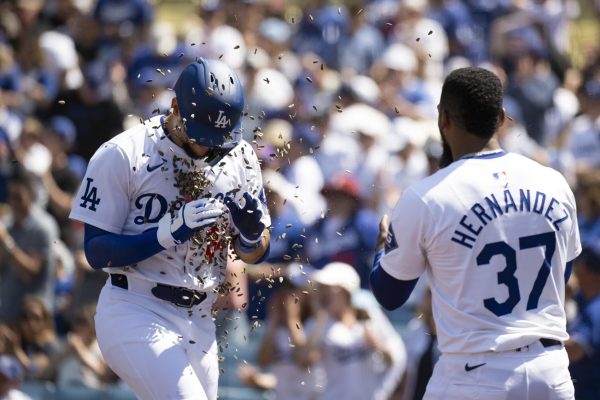Exploring Indian-Pakistani Diplomacy Through Cricket
September 2018 was the first time I witnessed an India-Pakistan cricket match in a crowd that was not completely Indian. India and Pakistan were facing each other in the Asia Cup for the first time in more than a year, their last encounter being a heartbreaking loss for India in the finals of the Champions Trophy in June 2017. I was nervous going into the match—not only did I desperately want India to win, but I was worried about what this encounter might mean for my friendships on campus. Anyone who knows anything about cricket knows that it is often referred to as a ‘religion’ in South Asia. The India-Pakistan rivalry is the biggest of them all. Given the delicate nature of our political relationship, we tend to take losses in cricket very personally because it is one of the only places we directly face each other.
The atmosphere was very different from anything I had experienced before. All of us were extremely competitive and engaged in banter without hurting our friendships. During the matches, we engaged in critical discussions pertaining to nationalism and politics. From my experience, cricket offered an effective platform to talk about political issues and, being an International Relations concentrater, I wondered if this could be achieved on a national or international level. I began talking to some of my professors to see where I could take this idea and I ended up getting the Lampert Fellowship to formally research cricket diplomacy in South Asia.
A major focus of my research was to assess whether or not cricket diplomacy is actually beneficial for the two nations. The citizens of both nations are extremely passionate about the sport, making the atmosphere surrounding an India-Pakistan cricket match belligerent and aggressive.
Although leaders have come together in the past to watch the teams play, citizens of the nations typically do not. If the result of an India-Pakistan game is extreme nationalism accompanied by a hatred for the other, the effectiveness of cricket diplomacy reduces significantly. I wanted to compare the effect of cricket on high-level diplomacy and popular opinion to conclude whether cricket diplomacy had the potential to work in the future.
The first part of my research was to read up about the history of cricket and the development of a cricketing culture in the subcontinent. Though I had grown up watching the sport, I had never actually studied it. It was extremely enlightening to read about how the British introduced cricket in India. They never meant to teach the natives their sport, but different communities eventually picked it up.
It started off with the Parsis, followed by the Hindus and then finally the Muslims. The biggest tournament in colonial India, called the Bombay Quadrangular, featured four teams—the British, the Parsis, the Hindus and the Muslims. As the idea of Partition started becoming more of a reality, the masses started identifying the Muslim team as Pakistani and the rivalry started even before the two countries formally came into existence.
Understanding the close connection between cricket and national identity in both countries was also essential for my research. It is this particular feature of the sport that allows politicians to either weaponize it or use it as a diplomatic tool, depending on their intentions. The citizens of both nations recognize their national cricket team as a representation of the nation and its policies as a whole. India-Pakistan cricket matches have historically served as a platform for the nations to prove their superiority to the other, or at least prove parity.
Cricket players from the 1970s and 1980s describe games as somewhere between sport and war but, paradoxically, political leaders have sought to use it as a vehicle of peace. In 1987, Pakistan’s General Zia-ul-Haq visited India to watch the two teams face each other alongside his Indian counterpart, Prime Minister Rajiv Gandhi.
This started a tradition of “cricket diplomacy,” where bilateral tournaments were increasingly used to send political messages by encouraging the people of the two nations to engage in their passion and with each other at the same time.
Sadly, a number of political events prompted India and Pakistan to only face each other in international tournaments in recent years, and I was lucky enough to witness one of these matches because of the Lampert Institute. The highlight of my summer research was definitely watching India play Pakistan in Manchester, England during the 2019 Cricket World Cup. While I have attended India-Pakistan matches before, I have never witnessed a World Cup game live.
The environment in Manchester was electric; almost 30,000 visitors flocked to the city to fill a stadium that could only hold 25,000. The roads around the stadium were lined with vendors and large groups of fans who had flown in from all around the world to see their team win.
The sense of competition was strong, but Indian and Pakistani fans laughed and joked with each other and engaged in friendly banter as they cheered their teams. The match was heavily one-sided in favor of India, and the Pakistani supporters left the stadium disappointed but with memories of amicable conversations and a genuine appreciation for the sport. I was also lucky enough to get an interview with Sourav Ganguly, one of India’s most successful cricket captains, who echoed the atmosphere of the stadium—while the political relationship has negatively affected cricket in the past, every effort should be made to separate the two so that the sport itself does not suffer.
The conclusion from my research was pretty sobering. Although cricket has been a useful diplomatic and symbolic tool in the subcontinent, it is not powerful enough to change the narrative of the otherwise fraught political relationship. It is true that cricket brings people together—not just players and administrators, but in recent years, fans as well. Reports of violence and rioting at stadiums have gone down over the years and it seems like people have begun to differentiate between the results of cricket and those of political interactions.
This is good for diplomacy as it allows cricket to create a conversational space and enforce positive visions of the other. However, the larger problems between India and Pakistan remain too big for cricket to solve. Seventy years of border tensions and disagreements over Kashmir, four wars and the horrific memories of Partition are issues cricket cannot resolve on its own. Only when leaders are ready to take formal diplomatic action will cricket be able to informally assist those processes.










